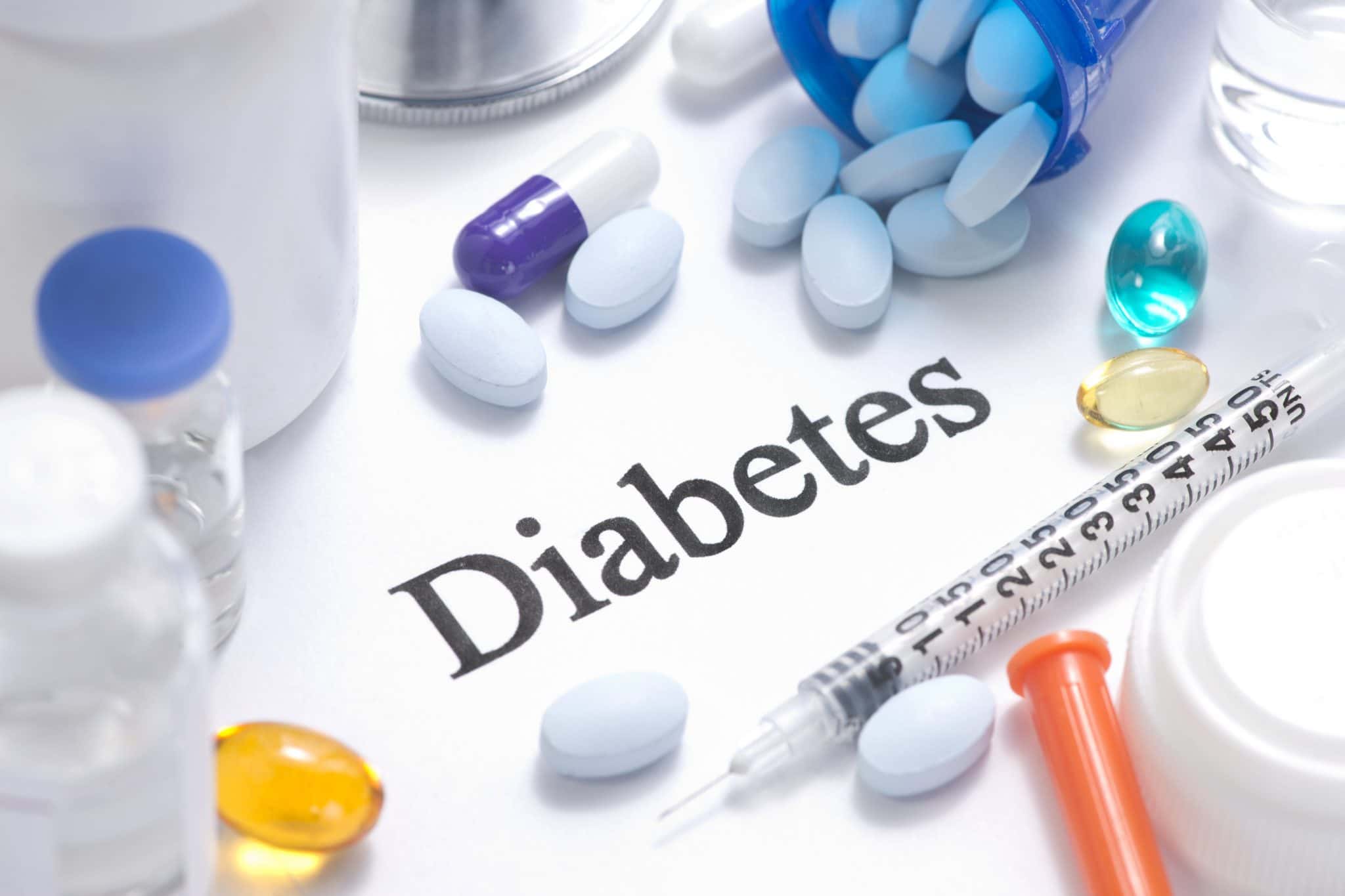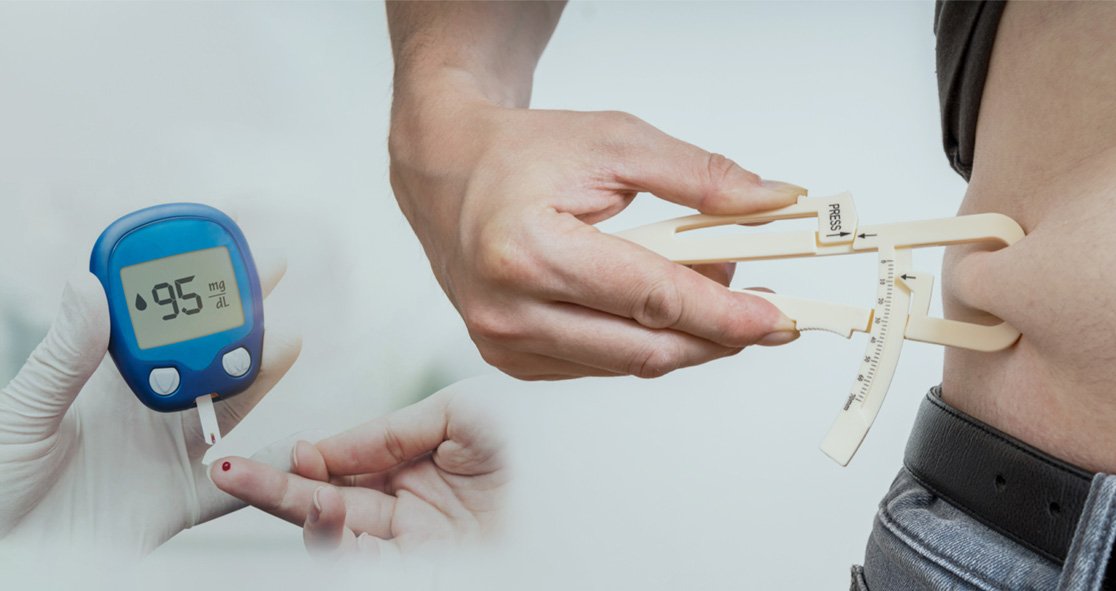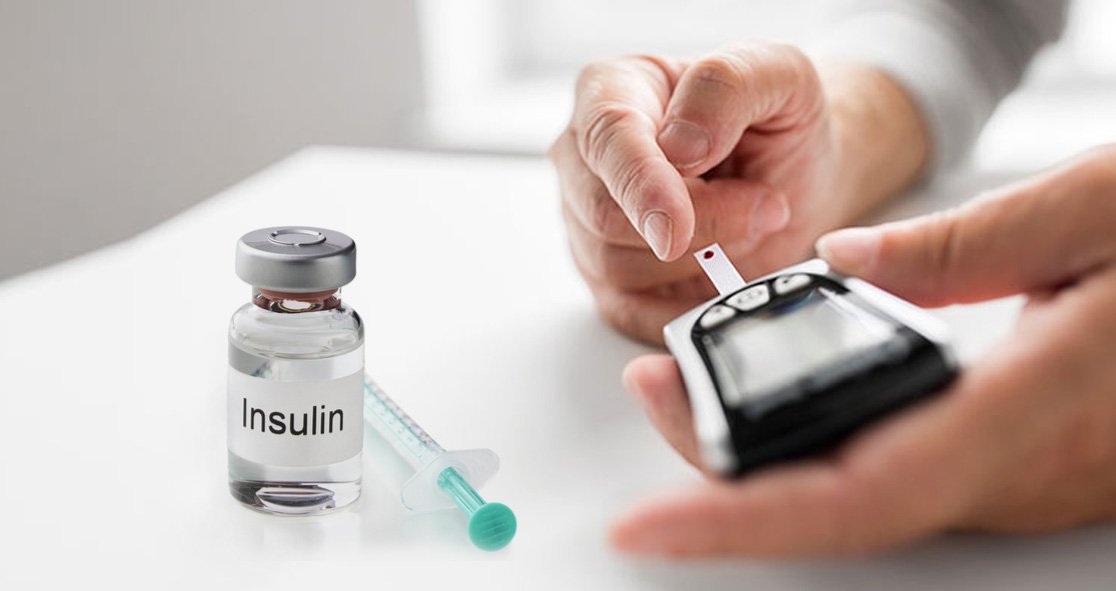A Program For The Cure Of Type 1 Diabetes Using A Generic Drug: Phase Ii
Researcher:Denise L. Faustman, MD, PhD., Associate ProfessorHarvard Medical School and Director Immunobiology LaboratoryMassachusetts General HospitalCharlestown, MA
Purpose:In August 2012, results of the Phase I trial showed that the pancreas of long-term diabetics was able to transiently make insulin after two doses of the Bacillus Camlette-Guerin vaccine. In 2018 a follow up report on a total of 232 participants both treated and untreated with BCG, published in the journal Vaccines, showed positive results in lowering blood sugars in subjects with type 1 diabetes to almost normal levels while also reducing the amount of insulin needed about one-third after 5 to 8 years from the initial treatment with the BCG vaccine without any reports of severe hypoglycemia. The 2015 FDA approved Phase II clinical trial, which is now fully enrolled with 150 participants with long-term type 1 diabetes, will determine the dose and frequency of doses required to reverse type 1 diabetes. It is still necessary to obtain funding to track these patients for an additional two years with the ultimate goal of bringing BCG to market as an approved treatment for type 1 diabetes. Five additional clinic trials with BCG/placebo to over 150 subjects are currently ongoing.
Albert Einstein College of MedicineBronx, NY
Pancreatic Islets And Parathyroid Gland Co
open to eligible people ages 18 years and up
The primary objective is to test the hypothesis that co-transplantation of allogeneic PTG with adult pancreatic islets in the IM site in people with Type 1 diabetes with functioning kidney and/or liver transplants is safe, allows islet engraftment, and leads to insulin independence.
San Francisco, California
What Are Clinical Trials For Diabetes
Clinical trials are part of clinical research and at the heart of all medical advances. Clinical trials look at new ways to prevent, detect, or treat disease. Scientists are conducting research to learn more about diabetes, including the following studies
- The Glycemia Reduction Approaches in Diabetes: A Comparative Effectiveness Study is following more than 5,000 people across the country who have type 2 diabetes to find out which combination of two diabetes medicines is best for blood glucose, also called blood sugar, management has the fewest side effects and is the most helpful for overall health in long-term diabetes treatment.
- TrialNet is conducting research studies around the world, including risk screening for relatives of people with type 1 diabetes, monitoring for people at risk, and innovative clinical trials aimed at slowing down or stopping the disease.
Researchers also use clinical trials to look at other aspects of care, such as improving the quality of life for people with chronic illnesses. Find out if clinical trials are right for you.
Watch a video of NIDDK Director Dr. Griffin P. Rodgers explaining the importance of participating in clinical trials.
You May Like: What Is Stage 2 Diabetes
Behavioral Approaches To Reducing Diabetes Distress And Improving Glycemic Control
Sorry, in progress, not accepting new patients
This study is comparing three programs to reduce Diabetes Distress in adults with type 1 diabetes. About a third of participants will take part in the TunedIn program, about a third will take part in the FixIt program, and about a third in the StreamLine program.
San Francisco, California
Identification Of Bioactive Compounds For The Prevention And Treatment Of T2d

Researcher:Virginia Polytechnic Institute & State UniversityBlacksburg, VA
Purpose:Type 2 diabetes is one of the fastest growing health problem in the US. It is a result of insulin resistance and loss of insulin secreting beta-cells. The goal of this research is to identify low-cost, natural compounds to prevent and treat T2D. Dr. Liu discovered for the first time that hispidulin, a compound isolated from the herb Salvia plebaia, which is also abundant in oregano, acts in the gut to promote beta-cell function and ameliorates T2D, while sulforaphane, a small molecule derived from cruciferous vegetables, is a potent insulin sensitizer in the body of T2D mice. In this project Dr. Liu will investigate whether a combination treatment with hispidulin and sulforaphane is more effective in preventing T2D development by simultaneously improving insulin sensitivity and preserving functional beta-cell mass in T2D mice. The results from this grant could lead to developing strategy for using these natural products as an alternative or complementary therapy for T2D.
Recommended Reading: Is Simvastatin Used For Diabetes
Dapagliflozin Effects On Hypoglycemia
Sorry, in progress, not accepting new patients
The purpose of this research study will be to test and evaluate if dapagliflozin has an effect on the amount of glucagon produced by the body and if that change will improve recovery time from hypoglycemia in participants with Type 1 Diabetes.
La Jolla, California
Glycemic Index And Post
Researcher:Abigail Wexner Research Institute at Nationwide Childrens Hospital|Columbus, Ohio
Purpose:Cardiovascular disease is a major cause of death in patients with type 1 diabetes. Increased inflammation causes future atherosclerosis and cardiovascular disease. Inflammation increases with increased glucose following a meal. Adolescents with type 1 diabetes have increased inflammation. The glycemic index quantifies the expected rise in glucose for a specific food 2 hours after a meal with a smaller increase for low glycemic index foods. The effects of low glycemic index meals on inflammation following a meal have not been studied in adolescents with type 1 diabetes. Inflammation before and after low and high glycemic index meals will be studied in 20 adolescents with type 1 diabetes. Changes in vascular and renal function will also be measured. If improvements in inflammation, vascular and renal function are found, this would strongly indicate that low glycemic index diets have the potential to reduce complications in type 1 diabetes.
Recommended Reading: Best Way To Eat For Diabetes
Medical Optimization Of Management Of Type 2 Diabetes Complicating Pregnancy
Sorry, in progress, not accepting new patients
Purpose: The objective of this proposal is to study the safety and efficacy of metformin added to insulin for treatment of type 2 diabetes mellitus among pregnant women. Participants: 950 pregnant women with type 2 diabetes complicating pregnancy from 10 U.S. clinical centers Procedures : Pregnant women with T2DM between 10 weeks and 22 weeks 6 days and a singleton fetus will be randomized to double-blinded insulin/placebo versus insulin/metformin. Primary outcome is composite adverse neonatal outcome . Study visits monthly at clinical visits blood draw at 24-30 weeks, newborn anthropometric measurements at less than 72 hours of life. Maternal and infant outcomes will be chart abstracted.
San Diego, California
Targeting Tead1 To Suppress Nash Progression In Diabetes
Researcher:Medical College of Georgia at Augusta University Augusta, GA
Purpose:Nonalcoholic steatohepatitis often occurs in patients with metabolic diseases and is highly associated with diabetes. How NASH interplays with diabetes is not clear. There is a need to identify new players and develop novel treatment regimens for NASH in diabetes. Dr. Chens lab has found TEAD1 expression goes up in mouse and human NASH livers, and liver cells without TEAD1 are protected from saturate fat-induced cell death, a common type of liver damage in diabetes. Therefore, Dr. Chen wants to examine whether TEAD1 expression is further elevated in diabetic mouse and human NASH livers, and whether increased TEAD1 expression in diabetic liver will make NASH occur more often and severe. Most of all, this study will test when liver TEAD1 is absent or inhibited by a drug, whether there will be less NASH incidence. This study will provide new therapeutic targets and options to treat or delay NASH progression in diabetes.
Recommended Reading: How To Treat A Corn When Diabetic
Epidermal Adhesive Sensors To Enhance Continuous Glucose Measurement In Patients With Diabetes: The Ease Study
open to eligible people ages 18-75
Self-testing of glucose by patients living with diabetes mellitus involves needles, which can cause discomfort or inconvenience these and other factors can lead to decreased willingness to perform these checks that are vital to DM management. While technology has evolved, a needle-free glucose monitoring device is currently not available. The investigators are studying a glucose sensor that adheres to the skin, similarly to a temporary tattoo. This sensor can now obtain continuous readings. As it has not yet been tested in individuals with DM, this study will examine its accuracy and acceptability in these patients. Results from this clinical trial could serve as the basis for further development of a non-invasive, wearable glucose sensor that can provide measurements of glucose levels continuously.
San Diego, California
Tewl Biomarker Study For Diabetic Foot Ulcer Recurrence
open to eligible people ages 18 years and up
This is a multicenter study of patients with diabetic foot ulcers to develop and validate potential tissue-based biomarkers that predict DFU wound recurrence. Trans-epidermal water loss will be measured on the closed wound site and a location similar to the wound site . Participants will be enrolled within two weeks after closure of their DFU. Complete wound healing will be verified at a second visit two weeks later and this visit will start the 16 week timeline where participants will be followed weekly by phone until the earliest of DFU wound recurrence or 16 weeks. Participants who experience a DFU wound recurrence and a subset of participants who do not experience a DFU wound recurrence by week 16 will be asked to attend one final visit.
San Francisco, California
Recommended Reading: Is Bluechew Safe For Diabetics
Circadian Regulation Of Pancreatic Islet
Researcher:Yale University School of MedicineNew Haven, CT
Purpose:Dr. Wens lab recently discovered that pancreatic islets from the non-obese diabetic mouse, an animal model for human type 1 diabetes, express a high level of biological clock genes. The expression of these genes changes at different times of the day. These same genes are in the gut of NOD mouse but they are expressed at very different times of the day compared with the pancreatic islets. Both the gut and pancreas are in the digestive system and they are vulnerable to be attacked by immune cells, which alter gut stability or damage the insulin-producing cells. In this study, Dr. Wen will investigate how the clock genes regulate the functions of pancreatic islets and gut differently, with the ultimate goal to provide new knowledge to improve the effectiveness of existing therapy and to design more effective new therapy to treat or prevent type 1 diabetes.
A Novel Molecule To Improve Continuous Glucose Monitoring

To create a fully automated artificial pancreas, it is critical to be able to quantify blood glucose in an accurate and stable manner. Current ways of continuously monitoring glucose are dependent on the activity of an enzyme which can change over time, meaning the potential for inaccurate readings and need for frequent replacement or calibration. Dr. Wang has developed a novel molecule that uses a different, non-enzymatic approach to continuously monitor glucose levels in the blood. This new molecule is stable over long periods of time and can be easily integrated into miniaturized systems.
Now, Dr. Wang is in the process of patenting his invention and intends to continue research on this new molecule so that it can eventually benefit people living with diabetes.
Wang, B., Chou, K.-H., Queenan, B. N., Pennathur, S., & Bazan, G. C. . Molecular Design of a New Diboronic Acid for the Electrohydrodynamic Monitoring of Glucose. Angewandte Chemie , 58, 1061210615.
Read Also: Is Sorbitol Safe For Diabetics
Determining The Role Of Bpa In Type 2 Diabetes Risk
Many synthetic chemicals have infiltrated our food system during the period in which rates of diabetes has surged. Data has suggested that one particular synthetic chemical, bisphenol A , may be associated with increased risk for developing type 2 diabetes. However, no study to date has determined whether consumption of BPA alters the progression to type 2 diabetes in humans. Results reported this year by Dr. Hagobian demonstrated that indeed when BPA is administered to humans in a controlled manner, there is an immediate, direct effect on glucose and insulin levels.
Now, Dr. Hagobian wants to conduct a larger clinical trial including exposure to BPA over a longer period of time to determine precisely how BPA influences glucose and insulin. Such results are important to ensure the removal of chemicals contributing to chronic diseases, including diabetes.
Hagobian, T. A., Bird, A., Stanelle, S., Williams, D., Schaffner, A., & Phelan, S. . Pilot Study on the Effect of Orally Administered Bisphenol A on Glucose and Insulin Response in Nonobese Adults. Journal of the Endocrine Society, 3, 643654.
Understanding The Biology Of Body
Determining the biological mechanisms regulating body-weight is important for preventing type 2 diabetes. The rise in childhood obesity has made this even more urgent. Behavioral studies have demonstrated that responses to food consumption are altered in children with obesity, but the underlying biological mechanisms are unknown. This year, Dr. Schur tested changes in brain and hormonal responses to a meal in normal-weight and obese children. Results from her study show that hormonal responses in obese children are normal following a meal, but responses within the brain are reduced. The lack of response within the brain may predispose them to overconsumption of food or difficulty with weight-loss.
With this information at hand, Dr. Schur wants to investigate how this information can be used to treat obesity in children and reduce diabetes.
Roth, C. L., Melhorn, S. J., Elfers, C. T., Scholz, K., De Leon, M. R. B., Rowland, M., Kearns, S., Aylward, E., Grabowski, T. J., Saelens, B. E., & Schur, E. A. . Central Nervous System and Peripheral Hormone Responses to a Meal in Children. The Journal of Clinical Endocrinology and Metabolism, 104, 14711483.
Also Check: How Do You Get Type 1 Diabetes
The Impact Of Diabetes On Revascularization
Sorry, in progress, not accepting new patients
The presence of foot symptoms at rest or tissue necrosis in patients with peripheral artery disease is a medical urgency and represents a state of critical limb ischemia where the risk of amputation, in the absence of revascularization, is high. No trial conducted to date in peripheral revascularization has determined the effect of diabetes on mechanism of revascularization failure. Therefore, this trial represents a unique opportunity to investigate the mechanisms by which diabetes affects surgical and endovascular revascularization procedures with the long-term goal of improving outcomes in CLI.
San Francisco, California
Investigating The Inhibitory Role Of Skeletal Muscle Phosphatases In Distal Signaling Of Obese Individuals
Researcher:Ohio University Heritage College of Osteopathic MedicineAthens, OH
Purpose:Dr. Consitt has been studying glucose uptake in skeletal muscle, the primary target for insulin action, with a focus on distal insulin signaling such as AS160. The current study seeks to identify the protein phosphatases that inhibit insulin-stimulated AS160 phosphorylation in humans, and difference in the interaction of Ppl and AS160 between lean and obese humans. In the long run, chemicals targeting PPS might be used to alleviate insulin resistance and treatment of type 2 diabetes. Based on the previous results in rats demonstrating PP1 as a potential inhibitor of AS160, Dr. Consitt seeks to confirm that this is also true in humans and further identify the subtypes of PPS involved. With solid preliminary data, Dr. Consitt hypothesizes that obese insulin-resistant humans have increased PP1alpha-AS160 interaction in skeletal muscle decreasing PP1alpha can increase insulin-stimulated AS160 phosphorylation. Dr. Consitt is especially interested in using this project for outreach and education of the Athens, Ohio community.
You May Like: Blood Testing Meters For Diabetes
Thc Effects On Glucose In Type 2 Diabetes
Sorry, not yet accepting patients
This study will examine the effects THC has on Glucose Metabolism and Endothelial Functioning in participants with Type 2 Diabetes. The participants will complete blood tests and tests to measure energy expenditure, CVD risks, and glucose metabolism. These tests will be performed prior to start of treatment and again after 2-weeks of treatment with the THC or placebo.
La Jolla, California
Glycaemic Control Is Associated With Sars
In this study, Marfella et al. show that patients with diabetes and poor glycaemic control have a blunted response to COVID-19 vaccine and are more prone to develop breakthrough infections, with further analysis suggesting smoking and male sex as potential risk factors to get COVID-19 despite vaccination.
You May Like: When To Take Insulin For Type 2 Diabetes
Using Incentives To Stimulate Behavior Changes In Youth At Risk For Developing Diabetes
Once referred to as adult-onset diabetes, incidence of type 2 diabetes is now rapidly increasing in Americas youth. Unfortunately, children often do not have the ability to understand how everyday choices impact their health. Could there be a way to change a childs eating behaviors? Davene Wright, PhD, of Seattle Childrens Hospital was granted an Innovative Clinical or Translational Science award to determine whether using incentives, directed by parents, can improve behaviors related to diabetes risk. A study published this year in Preventive Medicine Reports outlined what incentives were most desirable and feasible to implement. A key finding was that incentives should be tied to behavior changes and not to changes in body-weight.
With this information in hand, Dr. Wright now wants to see if incentives do indeed change a childs eating habits and risk for developing type 2 diabetes. She is also planning to test whether an incentive program can improve behavior related to diabetes management in youth with type 1 diabetes. Jacob-Files, E., Powell, J., & Wright, D. R. . Exploring parent attitudes around using incentives to promote engagement in family-based weight management programs. Preventive Medicine Reports, 10, 278284.
Could Participating In A Diabetes Research Trial Give Me Side Effects

Disadvantages or side effects may, in some cases, be a feature of clinical trials, although of course every step is taken to avoid this.
People with diabetes that wish to take part in a research trial should consult with their healthcare team and also discuss clearly with the healthcare professionals engaged in the study.
You should be given a clear idea of what to expect before committing to the clinical trial.
Recommended Reading: Is Pumpernickel Bread Good For Diabetics